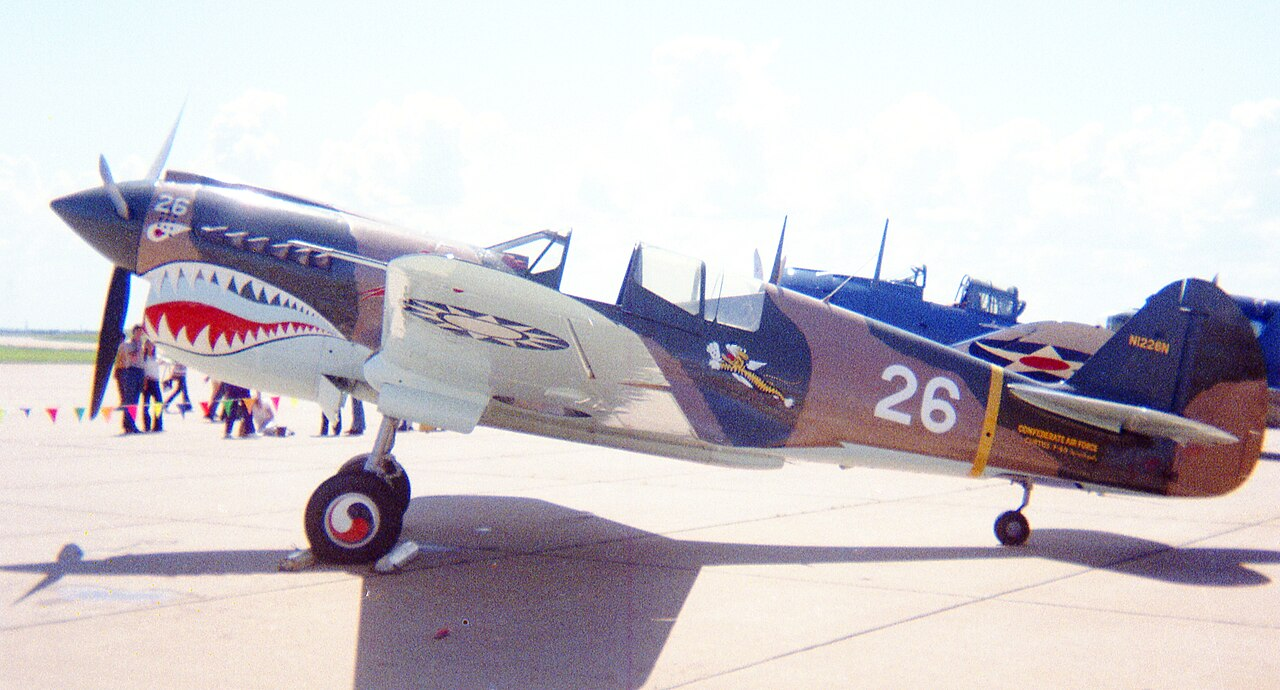
Of the great planes of World War II, the Curtiss P-40 Warhawk stands out not for its speed or sophistication but for its ruggedness and reliability as a fighter used by Allied forces in nearly every major theater. Its shark-mouth nose art made it a legend of the air, but its record in service showed it to be much more than a frightening face.

From the P-36 to Warhawk
The P-40 was bred from the preceding P-36 Hawk design during the late 1930s when air combat technology was changing at a very fast pace. Curtiss engineers improved the P-36 by equipping it with a liquid-cooled Allison V-1710 engine and came up with a fighter that was durable, easy to construct, and capable of mass production. It was hardly revolutionary, but it was precisely what the Allies required in the initial days of the war.

A Fighter Designed for the Middle of the Fight
Performance was a mixed bag for the P-40. At low and medium elevations, it was competitive, but at heights above 15,000 feet, it lagged—largely because of the single-stage supercharger’s limitations. Depending on the model, the P-40 topped out at anywhere from 340 to 378 mph, with stripped or specialized variants occasionally besting that speed. Climb rates varied too, typically ranging from 1,800 to 3,300 feet per minute.

Armament was robust: all but the earliest models had four to six .50 caliber machine guns, and the P-40 could also carry bombs or external fuel tanks for long missions. But where the planes truly excelled was in their ability to survive. Pilots would frequently return from missions in wrecked planes that, by all accounts, shouldn’t have survived. This survivability, augmented by a good roll rate and powerful diving capabilities, provided pilots with an advantage, particularly when confronting more agile opponents such as the Japanese Zero.

Battle-Tested Across Continents
Although outclassed by newer designs during the latter part of the war, the P-40 filled an important role from the African deserts to the Pacific jungles. In North Africa, it was the premier Allied fighter until Spitfire Mk IXs reached that theater. Commonwealth pilots, such as aces Neville Duke and Clive Caldwell, scored hundreds of kills in the Tomahawk and Kittyhawk models. The Mediterranean theater also witnessed the extensive use of P-40s, with five U.S. fighter groups—along with the Tuskegee Airmen—operating the type and scoring nearly 600 enemy planes.

In Asia, the P-40 performed with honor in the China-Burma-India theater, where its ruggedness and dependability were particularly appreciated under trying conditions. It was used extensively in the Pacific, too, where Australian and New Zealand units demonstrated that it could match Japanese aircraft blow for blow. Even the Soviet Union was supplied with P-40s under Lend-Lease and utilized them to good effect, particularly in low-to-mid-altitude dogfights where the plane’s shortcomings were less apparent.

Pitted against the Luftwaffe
Confronted with the Luftwaffe, specifically the Messerschmitt Bf 109, the P-40 usually had the odds against it. The German fighter enjoyed better speed, climb capability, and the ability to fly higher. The Bf 109 was capable of getting up to 39,000 feet and speeds of 648 km/h, while the P-40 normally topped out at 29,000 feet and 589 km/h. Nevertheless, the P-40 enjoyed the survivability advantage through its more substantial construction and self-sealing fuel tanks—attributes that the lighter, more agile Bf 109 sometimes lacked.

In the end, battle results tended to depend less on aircraft capabilities and more on pilot strategy and ability. German ace Hans-Joachim Marseille notoriously shot down dozens of P-40s by using altitude and careful placement. But Allied pilots such as Canada’s James “Stocky” Edwards proved that, in the right hands with a clever, aggressive pilot, the P-40 could hand the Luftwaffe its own medicine.

The XP-40Q: A Final Push
Curtiss did manage to catch up with the P-40 on the XP-40Q prototype. This last variant had a bubble canopy, clipped wings, and a two-stage supercharged Allison engine that could accelerate it to 422 mph at 20,000 feet. It was a remarkable improvement—but too little, too late. Other planes, such as the P-51 Mustang and the P-47 Thunderbolt, had already gained the upper hand by then, with improved performance in all areas. The XP-40Q was canceled, and with that, the development of the Warhawk ended.

A Fighter Worth Remembering
Although the P-40 was not the technological cutting edge of World War II aviation, it left its mark in one sense: it was on the scene when the Allies needed it most. It replaced holes in the air defense, performed critical missions in each major theater, and provided thousands of pilots with a plane they could depend upon. It served many more years than anyone had anticipated, a reflection of its sturdy design and the courage of those who operated it.

The Warhawk wasn’t as polished or prestigious as some of its contemporaries, perhaps, but it earned its place in history through grit, reliability, and brute presence. It was a fighter you could rely on—and in a war that engulfed the entire globe, that meant something.
More related images you may be interested in:





